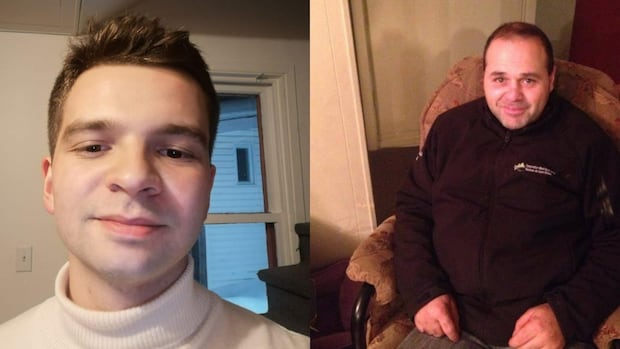An investigation by a Quebec coroner into the 2023 deaths of two volunteer firefighters during a water rescue in Saint-Urbain, Que., concluded their deaths were a result of a “chain of events.”
In a 39-page report released Wednesday, Quebec coroner Andrée Kronström revealed that significant shortcomings contributed to the men’s deaths, including insufficient emergency planning, a lack of training and inadequate equipment for aquatic interventions.
On May 1, 2023, Régis Lavoie, 55, a volunteer firefighter, and Christopher Lavoie, 23, a firefighter in training, drowned after boarding an amphibious ATV in an attempt to rescue a couple whose home was surrounded by rapidly rising waters from the nearby Gouffre River.
The river overflowed after significant rainfall and snowmelt led to what Kronström described as a 100-year flood.
The strong current made it hard for the two firefighters — who were not related — to control the ATV, which started drifting. They eventually fell into the water and were swept away.
As heavy rain caused rivers to swell in Quebec’s Charlevoix region, cell phone video captured a recreational vehicle floating down a rushing river in Baie-Saint-Paul, Que., and colliding with a bridge.
Kronström made several recommendations highlighting the need to improve the co-ordination of municipal resources and strengthen collaboration between municipalities within the same MRC, or regional county.
“The municipal civil security plan was not known and the deployment of municipal resources did not allow decisions to be taken that were appropriate to the urgency of the situation,” Kronström said.
With a lack of direction from municipal authorities and insufficient resources, the firefighters made the decision to attempt the rescue using a personal amphibious vehicle, which was not designed for use in fast-moving waters of that depth.
Redefining hero culture, or the ‘need to rescue’
In her report, Kronström underscored the importance of providing better training for firefighters to ensure their safety during natural disasters, emphasizing the need to redefine hero culture and its place within the curriculum for Quebec firefighters.
Expert testimony heard last spring during the course of the coroner’s public inquiry determined the only safe intervention on that fateful day would have been for the two men not to intervene.
At the time of the attempted rescue, they were wearing heavy firefighting gear, known as bunker suits, but were not wearing personal flotation devices. Available life jackets, according to a 2024 report by Quebec’s workplace health and safety board (CNESST), were not adjusted to be worn over firefighting equipment.
A subsequent study carried out by the CNESST, in a controlled environment, showed that firefighters wearing full gear during interventions on or near the water will in turn become victims in need of rescuing if they fall in the water.
“They meant well, they wanted to go and help,” Kronström said of the two men, “but they did not put their safety first” and were maybe unaware of the risks involved.
Kronström explained the “need to rescue” or the notion of hero culture needs to be approached in a balanced and safe manner.
The stranded couple in the home was eventually airlifted to safety in the late afternoon by a Sûreté du Québec helicopter.
Quebec’s École Nationale des Pompiers told CBC it would not comment on the report and referred questions about training to Quebec’s Public Security Ministry.
Kronström, for her part, said the director of the school, Stephen Valade, had been receptive to her comments during the inquiry.
Change is welcome, but more support needed
Meanwhile, the mayor of Saint-Urbain, Claudette Simard, welcomed the coroner’s report and said she was satisfied with its findings.
She said the report highlighted the challenges and needs of small municipalities like Saint-Urbain when it comes to dealing with natural disasters.
“At the best of times, I have 12 firefighters,” Simard said, adding that’s not enough.
She also said that adding more volunteer firefighters takes time in order to ensure they get proper training.
“It has to change,” she said, adding she wouldn’t want the deaths of the two firefighters to have been in vain.
Since the tragedy, she said, the town has overhauled its public security emergency plan and will monitor it annually to revise any modifications.
As per the coroner’s recommendations, the town will also have to redo its website to include an alert system to warn the population of any emergencies and a page with tips and tools to be better prepared for future events.
Furthermore, Simard said work was already underway with neighbouring municipalities to see how they can share fire safety resources and services to better respond to emergencies.
The prefect of the Charlevoix regional municipal county, Patrick Lavoie, said the goal is to have an inter-municipal service agreement in place by January 2026.
Simard said the town wants to implement all the recommendations but is hoping the provincial government will provide more support on the ground and financial resources.
In an email to CBC, Quebec’s Public Security Ministry said it will review the report and analyze its recommendations, but pointed to various steps it had already taken to reduce the risk of disasters and strengthen response capacities to these events.

